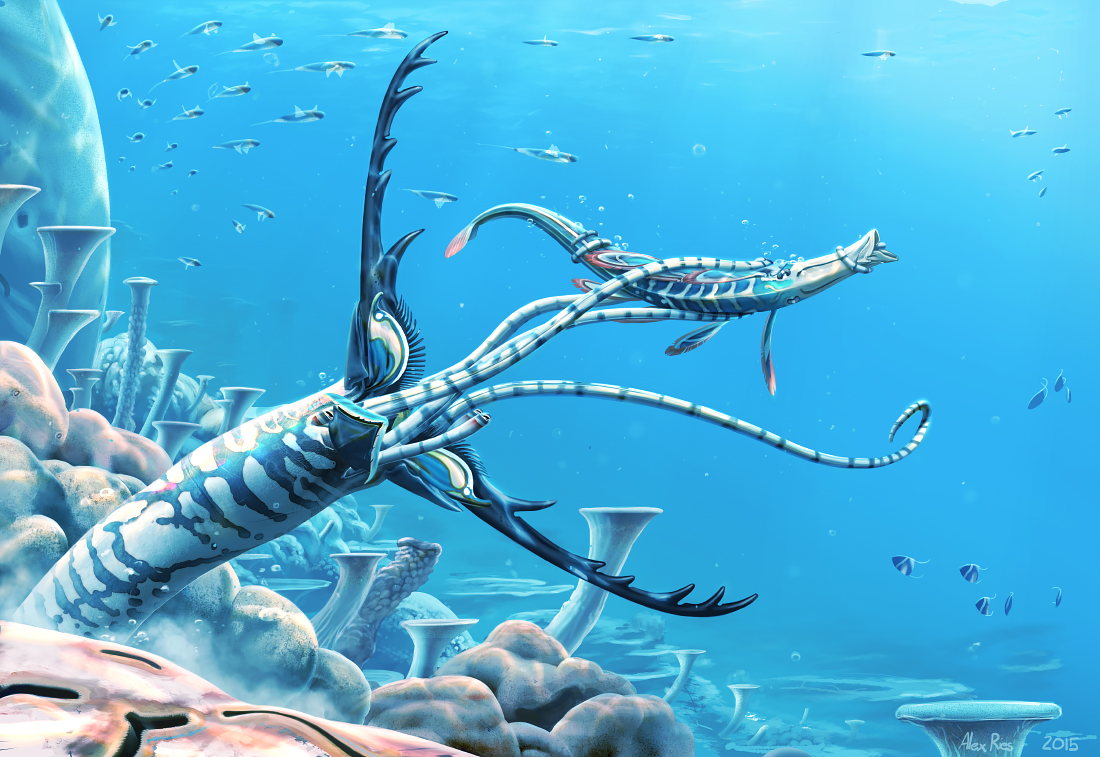Deviation Actions
Description
www.patreon.com/alexries?ty=h
“The Reef Antlerworm, a robust and ill-tempered marine predator with a broad distribution in the warmer waters of Chri-irah, has been of interest to birrin natural historians, and fishermen, for some time.
Reaching a maximum length of around 3 feet, this species, one of the larger of this group, is dwarfed by the more rarely encountered giants of the deeper oceans, still manages to dominate its shallow water habitat. Hunted by divers for thousands of years for both its meat and egg masses, scientific interest has been focused on its informative anatomically adaptations, which offer important clues into the early evolution of the quadrilaterians to which the birrin belong.
Relying on surprise when hunting, the reef antlerworm insinuates itself among marine debris on reefs and wrecks, showing only the tips of its sensory tentacles and eyestalks as it waits for prey, predators or rivals. Any small creature that swims too close is rapidly subdued in an explosive tangle of tentacles that erupt from around the mouth. The huge ornamental jaws are opened during prey capture, both to threaten any opportunistic predators, and simply to make room for food to pass. Spines at the jaws’ base help push prey down the expansive gullet, most of which is swallowed whole.
The jaws, actually a slight encumbrance when feeding, come into their own when antlerworms meet one another. Prime hunting spots on a reef can be hard to come by, and prey concentrations can change with tides and seasons. There is a constant battle to secure the best reef hollows and caves, and the worms often leave their haunts to attempt to find somewhere more productive. If they find a more desirable site is already taken, both will rise up from the sea floor, jaws held wide, and face off. If one set of jaws is obviously larger than the other, the smaller worm will usually retreat. Evenly matched opponents, however begin by locking jaws and pushing one another to determine strength. If that is not enough, a furious and usually brief fight begins, each trying to injure the other. The loser, sometimes fatally wounded, retreats. If no longer mobile, it may even be partially eaten.
While not a ‘primitive’ organism, the antlerworms belong to a group that split off from the main quadrilaterian branch hundreds of millions of years ago. While the branch containing the birrin maintained its stalked eyes and sensory tentacles in many cases, they presently play no role in feeding. However, as revealed by fossils such as the BASKETWORM, what become eyestalks in the birrin were originally lophophoroid structures evolved to catch food via filter feeding. Rather than reducing their role in prey capture, the branch that become antlerworms vastly increased the size and strength of these organs, using them as powerful tentacles capable of both sensing and grasping prey. The eye spots, initially at the ends of the tentacles, evolved downwards and away from the vulnerable tips to nearer the body and are thus protected from struggling food.
These adaptations offer scientists a window into the early role of quadrilatarian sensory tentacles, and why, even if not directly involved in feeding among the birrin and their relatives, remain evolutionarily important to the group today.”
Bobbit worm inspired? Looks intimidating.




































